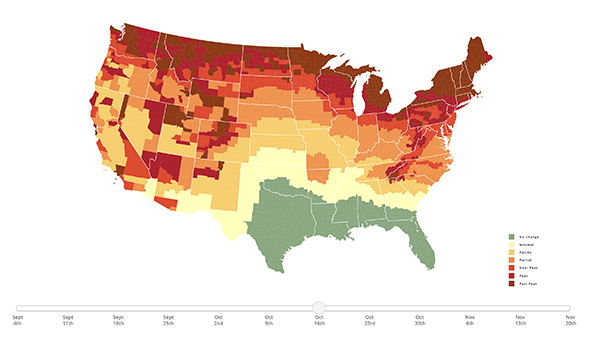Interactive Fall Foliage Prediction Map & How FLIPBOARD Can Help You Find Great Autumn Leaves
Every year we publish the link to this useful map to help photographers and nature lovers connect with fall foliage at its peak. Folks planning travel to or living in the New York City area or points slightly south can expect to find abundant arboreal action around October 16. Predictions do not come with ironclad guarantees, and wise travelers make decisions based on multiple sources.

The actual SmokyMountains.com map currently shows the date range from September 4 through November 20 and is updated weekly. The image at the top of this story has been edited to fit our format.

Maps aside, the best way to gauge the up-to-date fall foliage coloration process is to contact a friend or hotel owner in the area of interest. An eyewitness report from a reliable individual always tops a map or marketing department.

FLIPBOARD
You probably already subscribe to (or at least know about) FLIPBOARD; millions rely on it for consolidated information about subjects they’re most interested in. The photography material is especially robust.
If you’re a newcomer or only an intermittent FLIPBOARD viewer, start here: 9 Flipboard Magazines for photographers. The depth of knowledge on FLIPBOARD is staggering.

Those seeking intel on fall color changes will find plenty at Flipboard #Vermont. The state of Vermont is practically synonymous with autumn foliage, but in the final analysis, many other states equal or surpass that state’s opulence. That’s a very subjective and easily arguable assessment; we cite this link because broader areas of New England are found there.

World Outlook for Fabulous Color
We’re guardedly optimistic about the prospects for 2023. This summer was the hottest since records began in 1940. More disturbingly, perhaps, the month just ending was the hottest August on record (on a worldwide basis).
What does the super heat mean for fall foliage? No one can answer with any certainty, but there may be a message within these statistics: get out and shoot pictures of the beautiful autumn colors while they’re still happening.
—Jon Sienkiewicz


















